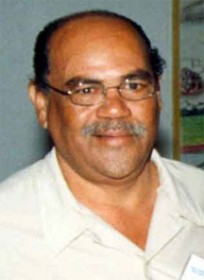The Amerindian Peoples Association (APA) and the Guyana Gold and Diamond Miners’ Association have posited sharply differing opinions on the relationship between Amerindians in their indigenous communities and miners plying their trade in concessions in and around those communities.

APA Project Manager Jean La Rose told Stabroek Business that she shared a view expressed in the United States State Depart-ment Report on Guyana which suggests that Amerindians benefit minimally – if at all – from business relationships with loggers, sawmillers and miners. The State Depart-ment Report says that in order “to earn cash, some villages contracted with loggers, sawmillers and miners to exploit timber and other natural resources on their land” and that these arrangements were generally “unequal exchanges” that benefit the contractors more than the communities.
But GGDMA Executive Director Edward Shields dismissed the notion which he said was implicit both in the Human Rights Report and in La Rose’s remarks that Amerindians were malleable people who were simply being duped by people from the coastland.
“I cannot speak for the timber industry but I can tell you that at the moment miners are relinquishing claims on Amerindian lands. In fact most of them are being thrown off.” Shields told Stabroek Business that he was aware that a number of Amerindians were dredge owners and are currently “working” their own lands, many of them without permission from the GGMC. “There are cases in which Amerindian miners have simply refused to apply to the Guyana Geology and Mines Commission (GGMC) despite the fact that the law does not give them sub-surface rights,” Shields said.
However, La Rose told Stabroek Business that many of the “business relationships” that are formed between Amerindians, on the one hand and miners and loggers on the other, arise out of “an economic need for quick money” on the part of the Amerindians. La Rose told Stabroek Business that the law provides “little if any protection for Amerindians” noting that while the law stipulates that mining activity on titled land should proceed only with the permission of the Amerindian communities, “miners often turn up with permits from the GGMC and assert that these are enough for them to pursue mining activities.”
La Rose says that the APA is also aware of relationships between various interior business operations and Amerindians in which the latter serve as cheap, hired labour in an exploitative setting.

However, Shields described as “poppycock” the notion that Amerindians were simply sitting and waiting to be exploited. He said that some individuals and communities have actually “done well” out of mining asserting that mining in interior locations has not affected the lives of Amerindians “in the manner that some people would have us believe.”
The US State Department’s 2010 Human Rights Report on Guyana paints a less than flattering picture of life in Amerindian communities stating that “the standard of living was lower than that of most citizens” and that they had “limited ability to participate in decisions affecting their lands, cultures, traditions and allocation of natural resources.” The Report also states that “indigenous communities had limited access to education and health care.”
La Rose told Stabroek Business that there was a need for Amerindians to become more familiar with orthodox principles of business in order to ensure that they maximize opportunities for the collective advancement of their communities.





